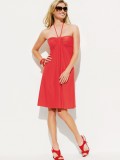Read this ebook for free! No credit card needed, absolutely nothing to pay.
Words: 425407 in 46 pages
This is an ebook sharing website. You can read the uploaded ebooks for free here. No credit cards needed, nothing to pay. If you want to own a digital copy of the ebook, or want to read offline with your favorite ebook-reader, then you can choose to buy and download the ebook.


: The Principles of Chemistry Volume II by Mendeleyev Dmitry Ivanovich Lawson T A Thomas Atkinson Editor Kamensky George Translator - Chemistry; Periodic law; Argon
LIST OF PLATES
PLATE
The Oriental Rug
THE MYSTERY OF THE RUG
To judge of an Oriental rug rightly, it must be looked at from several points of view, or, at least, from two aspects; against the light and with the light. From the first standpoint, against the light of knowledge, speaking figuratively, there may be seen only a number of rude and awkward figures in crude colours scattered erratically on a dark or dingy-looking background, a fringe of coarse and ragged strings at either end, and rough frays of yarn at the sides. This is what is accepted by many people as an Oriental rug. And indeed this is what most rugs are.
If, on the other hand, we view our rugs with the light of a better wisdom and happier experience, we will see the richest and softest of colours, the most harmonious shadings and blendings, medallions brilliant as jewels, or geometrical designs beautiful as the rose windows of a cathedral; or, again, graceful combinations of charmingly conventionalized flowers and delicate traceries and arabesques,--all these displaying new glories of ever changing and never tiring beauty. Each woven picture, too, is as soft to tread upon as a closely mown lawn, and caresses the feet that sink into its pile. These are Oriental rugs as their admirers know and love them.
Perhaps the chief charm of all such beautiful rugs is in their mystery. Their designs are odd and strange and full of hidden meanings, and their effects are often evolved from the crudest and clumsiest figures, hooks and squares and angles; they owe their wealth of colour to simple vegetable dyes from the woods and fields and gardens, and yet the secret of many of these dyes is still a secret, or has long ago been lost. The places whence the rugs come, the people who make them and those who sell them, all are mysterious and hard to know and understand.
Moreover, broadly speaking, there are no experts on the subject, no authorities, no literature. He who would know them must learn them by experience. The rug dealers, for the most part, seem to treat their wares merely as so much merchandise, and what knowledge concerning them they are willing to impart is so contradictory as to be almost valueless. Few of them would agree upon the name of an example which might be out of the ordinary, or be able to tell where it was made. Ask of them what a "Mecca" is, and they will stammer in their varying answers. And yet the Armenians who handle most of the rugs in this country are often highly educated, and fully appreciate the beauty of their wares. Their taste, however, is not always our taste, and all the Orientalists seem to retain their barbaric fondness for crude and startling colours. When we would turn to books for information in the matter we find that the authorities are not many. They might be numbered on your fingers and thumbs. These few books, moreover, have been published only in limited editions at high prices, and are not easily obtainable. One of the most important of such works is the sumptuously illustrated, elephantine folio, issued in Vienna in 1892 by the Imperial and Royal Austrian and Commercial Museum. And, elaborate as this authority is, the modest editor, by way of apology, says in the preface that "no pretensions are made toward perfection owing to the little information that we can fall back upon." A recent authority on the subject is John Kimberly Mumford, and his volume on Oriental Rugs, published in 1900, has thrown much light on the subject. Too great praise cannot be given to this work and to his later studies in the same field.
Still, no one knows it all, and the mystery of Oriental rugs only deepens as we try to learn. The little that any one may really know of them through experience, through questioning and elusive answers, through conversations with obliging and polite vendors, and through foreign travel even, is, when all is said, only a patchwork of knowledge. Consider how stupendous and hopeless would be the task of one who would dare endeavour to analyze, criticise, classify, and co-ordinate the paintings of the past five centuries, were no names signed to them or no appreciable number of pictures painted by the same known artist.
He who would write of rugs has a like condition to face.
And alas! also, whoever would write on this subject must now treat of it principally as history. The characteristic rugs, the antique rugs, the rare specimens, are seldom to be bought. They are in museums, or in the hands of collectors who hold them in even a tighter fist.
Twenty years ago the warning was given that the choice old rugs were growing scarce; the years following found fewer still upon the market. Two or three years ago one of the largest wholesale houses in New York, carrying a stock of half a million or a million dollars, had no antiques to show. In the autumn of 1902, another large New York importer who had just returned from Persia, Tiflis, and Constantinople admitted that he had not brought back one valuable antique piece.
Free books android app tbrJar TBR JAR Read Free books online gutenberg
More posts by @FreeBooks

: The Irish Penny Journal Vol. 1 No. 12 September 19 1840 by Various - Ireland Periodicals The Irish Penny Journal


: Standard Measures of United States Great Britain and France History and actual comparisons. With appendix on introduction of the mètre by Wurtele Arthur S C - Weights and measures History; Metric system





